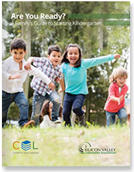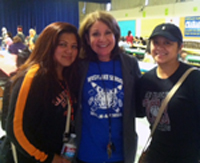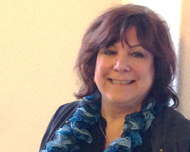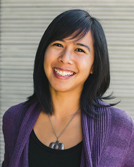The Harvard Family Research Project separated from the Harvard Graduate School of Education to become the Global Family Research Project as of January 1, 2017. It is no longer affiliated with Harvard University.

|
March 19, 2015 Building Bridges to SuccessMichelle Sioson Hyman
|
Related Resources
A New Approach to Transitions: Welcoming Families and Their Ideas into Kindergarten Classrooms
Ready for Success: Creating Collaborative and Thoughtful Transitions into Kindergarten
Web Conference: How Families, Schools, and Communities Are Reshaping Family Engagement to Reach All Learners
Kindergarten Transition Practices: Changing “The Way We Do Things Here” in Discovery Communities
Transition Planning Resources
FINE Newsletter, Volume VII, Issue 1
Issue Topic: Engaging Families, Schools, and Communities in the Transition to School
Voices From the Field
People are not surprised to know that Silicon Valley is a center for global innovation, a bastion of higher education, and one of the wealthiest regions in the world. What is surprising is that children and families in Silicon Valley face challenges that one would not expect given the region’s success and prosperity.
- In Silicon Valley, 41% of children are not reading proficiently by the time they complete third grade;
- More than 10,000 low-income 3- and 4-year-old children are eligible for subsidized preschool, yet there are no affordable programs available to them;
- More than 21,000 children, birth through age 5, have a developmental delay that is unidentified and therefore not treated; and
- 38% of low-income parents of young children are unemployed.
To address these challenges, in 2010 the Silicon Valley Community Foundation’s Center for Early Learning (Center for Early Learning) started Bridges to Success. Bridges to Success is a five-year initiative designed to ensure success by third grade for all children in Silicon Valley’s San Mateo County, but more specifically within seven communities in its highest-risk school districts.1 Bridges to Success focuses on ready children, ready families, ready schools, and ready communities.
READY CHILDREN STRATEGIES
Within the seven communities, the Center for Early Learning funds school districts and community-based early education and family support providers to implement strategies that help children enter school ready to succeed.
- Summer transition program. Kickoff to Kindergarten is a four-week summer program prior to kindergarten for children who have never had a preschool experience, are low income, and/or dual-language learners. In addition to children gaining classroom and daily routine experience, parents are also provided extensive education and training on how to navigate the elementary school system, cultivate parent-child learning, and promote positive discipline.
- Developmental screening. Children participating in Bridges to Success programs are screened for developmental delays utilizing the Ages and Stages Questionnaires (ASQ) and the Ages and Stages Questionnaires—Social/Emotional (ASQ-SE). These screenings ensure children are on a positive developmental trajectory, and if not, are referred to the appropriate intervention services.
READY FAMILIES STRATEGIES
Bridges to Success relies on critical cross-sector partnerships to ensure that families get the support they need to make a smooth transition to school.
- Parent education and family support. The Learning Together program provides home visitation services, parent–child learning groups, and mental-health case management for high-risk families.2 Many families are identified for these services through the ASQ and ASQ-SE screenings.
- Publicly available parent handbook. Center for Early Learning also developed an easy-to-read handbook, Are You Ready? A Family’s Guide to Starting Kindergarten, and companion video to provide families information about kindergarten expectations, with an update completed in January 2015. With recent changes in kindergarten enrollment ages in California, this handbook serves as a trusted guide for parents getting ready to send their child off to their first day of school.
 Family support and parenting programs are having an effect on families and schools. Annabelle Kloezman, Principal of Westlake Elementary School in San Mateo County, writes: Thank you for scheduling this class at Westlake Elementary. I had several parents who spoke with me this morning about CELDT (California English Language Development Test) and other issues. I noticed that [the parents who came to me] had attended the class, so it’s obvious they learned something. The class encouraged parents to approach me. Because of your parent class, we will start a group for Spanish-speaking parents so that they can become more informed and connected with school. |
READY SCHOOLS STRATEGIES
In addition to working with early childhood providers and families within the funded communities, the Center for Early Learning also works with school districts.
- Pre-K–3 alignment. Each Bridges to Success community created a Ready School Team that was designed to bring early care and education and K–12 teachers, providers, and administrators together to design and implement districtwide articulation and alignment plans. School districts were then awarded grants of up to $20,000 to implement their plans. Several common themes emerged: (1) joint Pre-K and early elementary teacher and administrator professional development; (2) Pre-K and kindergarten teacher classroom visits; (3) family kindergarten information nights; (4) family open houses and meet and greets; and (5) Pre-K and kindergarten curriculum alignment. A dedicated staff person hired by Silicon Valley Community Foundation provides technical assistance to Ready Schools Teams to support their work and help them meet their goals. Through reflections with community partners, the Center for Early Learning learned that the funding for this work and the provision of a technical assistance staff member are two of the most valuable resources the initiative has to offer.
- Special Needs Advisory Committee. The Center for Early Learning convened an advisory committee to develop a set of recommendations for school districts to help smooth the transition to kindergarten for children identified with or at risk for special needs, and their families.
READY COMMUNITIES STRATEGIES
The Center for Early Learning also brings stakeholders together to discuss what is happening in each of the funded communities.
- Elevating community awareness through research and convening. The Center for Early Learning completed a local longitudinal study that showed the impact of kindergarten readiness on later school success. The Center for Early Learning also released a first-of-its kind study, known as the Parent Story Project, to investigate what it is like to be a parent of a young child in Silicon Valley. The Center for Early Learning has held yearly regional gatherings to discuss findings of local research and emerging issues in the field of early and elementary education. Conducting local research has brought a variety of family, school, and community stakeholders onboard as champions for early learning and transition efforts.
 By bringing together collaborative partnerships, the Center for Early Learning has influenced how school districts operate. Elizabeth Schuck, Associate Superintendent of the Cabrillo Unified School District, writes: In my 30-plus years as an educator, I’ve been involved in a multitude of important initiatives in support of early learning. I must say that the Bridges to Success initiative has had the most dramatic impact and has quantitatively changed the way we “do business” in Cabrillo Unified. As a result of the Bridges to Success Initiative, Cabrillo has formed strong, collaborative partnerships not only with our local preschool providers, incoming parents, and students, but also with service agencies that had never before served our isolated coastal community. |
SUSTAINABILITY: IT'S A "BIG LIFT"
Bridges to Success is now in its fifth and final year. Its work, however, will live on in a new countywide initiative known as The Big Lift. Led by Silicon Valley Community Foundation, the San Mateo County Office of Education, and the San Mateo County Board of Supervisors, the Big Lift focuses on high-quality learning experiences from preschool through third grade, on reducing chronic absence and summer learning loss, and on engaging parents and the broader community to support learning in school and at home. Based on findings from Bridges to Success, the initiative provides an intentional continuum of services starting before preschool, transitioning through the elementary years, focusing on summer learning, and engaging families throughout their child’s early years.
TRANSITION STRATEGIES IMPLEMENTED:
- Summer transition programming
- Children’s developmental screening
- Parent engagement and family support
- Kindergarten handbook
- Pre-K–3 alignment
- Special Needs Advisory Committee
- Community research about school readiness and family engagement
- Public convening about transition topics
 |
About the Author: Michelle Sioson Hyman, MPH, is senior officer for the Center for Early Learning at Silicon Valley Community Foundation. |
1 The seven communities included in the initiative are: Redwood City, Ravenswood (East Menlo Park and East Palo Alto), Cabrillo Unified, La Honda-Pescadero Unified, Daly City, South San Francisco, and Pacifica. These communities were identified based on the percentage of students eligible for free and reduced-price lunch, percentage of dual-language learners, and California Academic Performance Index (API) scores. Funding for the initiative comes from a blend of private-public resources, with primary funding from First 5 San Mateo County.
2 The parent education and family support work is led by StarVista, a family support provider in the County. The Center for Early Learning and StarVista work closely to make sure that the work is aligned.
This resource is part of the March FINE Newsletter. The FINE Newsletter shares the newest and best family engagement research and resources from Harvard Family Research Project and other field leaders. To access the archives of past issues, please visit www.hfrp.org/FINENewsletter.
